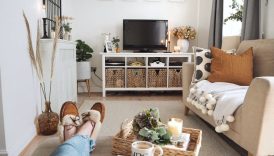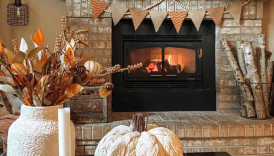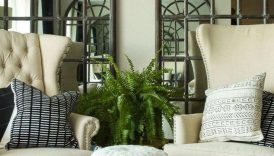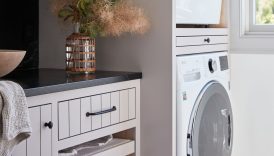Decor Dreams: Inspiration for Your Home Interior Design Project

Choosing a Theme for Your Home Interior Design Project
When embarking on a home interior design project, one of the first crucial steps is to choose a theme. This decision sets the tone for your entire space and can greatly influence the ambiance and livability of your home. Two popular avenues to explore are traditional and modern styles, each boasting its own unique qualities.
- Decor Dreams: Inspiration for Your Home Interior Design Project
- Choosing a Theme for Your Home Interior Design Project
- Traditional vs. Modern Styles
- Color Schemes and Mood Boards
- Creating Functional and Stylish Living Spaces
- Furniture Selection and Placement
- Lighting and Accessories
- Maximizing Small Spaces with Clever Design Solutions
- Multi-functional Furniture Pieces
- Space-saving Storage Ideas
- Incorporating Nature into Your Home Decor
- Indoor Plants and Greenery
- Natural Materials and Textures
- Personalizing Your Home with Art and Decorative Elements
- Gallery Walls and Statement Pieces
- DIY Decor Projects
Traditional vs. Modern Styles
Traditional styles exude a sense of elegance and are often characterized by rich fabrics, ornate details, and warm color palettes. Think of classic elements like:
- Rich wood finishes: Mahogany or cherry woods for furniture and cabinetry.
- Soft, muted colors: Earthy tones, deep reds, or soft blues to create warmth.
- Detailed decoration: Crown molding, wainscoting, and antique accessories.
On the other hand, modern styles focus on minimalism and functionality. These designs typically feature:
- Clean lines: Sleek furniture without excessive embellishments.
- Bold color choices: Bright hues that can serve as statement accents against neutral backgrounds.
- Open spaces: An emphasis on light, airy layouts that encourage freedom of movement.
For example, while assisting a friend in revamping her living room, they chose a traditional approach with deep mahogany furniture and soft beige walls, perfectly marrying comfort with sophistication.
Color Schemes and Mood Boards
Once the theme is established, selecting a color scheme becomes paramount. Colors not only influence aesthetics but also affect mood. Creating a mood board is a fantastic way to visualize your ideas. Here’s how to get started:
- Choose a Base Color: This will be the primary shade used throughout your rooms.
- Complementary Colors: Select two or three additional colors that harmonize with your base.
- Material Samples: Include fabric swatches, paint chips, and texture samples.
Consider this color palette for a calming living space:
- Base: Soft gray
- Complementary 1: Light blue
- Complementary 2: Cream
- Accent: A touch of gold
A mood board visually represents these elements and can be as simple as a digital collage or a physical board with pinned samples. It aids in making decisions and ensures that all elements of your design project align beautifully, creating that perfect ambiance in your home. The journey of designing your space becomes not just about aesthetics but also about creating an environment that reflects your personality and serves your lifestyle needs.
Creating Functional and Stylish Living Spaces
With a theme and color scheme in place, the next step in your interior design journey is to focus on creating functional and stylish living spaces. This is where furniture selection and placement come into play, setting the stage for comfort and efficiency in your home.
Furniture Selection and Placement
Choosing the right furniture is crucial as it defines the character of your space. Opt for pieces that not only fit within your chosen theme but also meet your practical needs. For example, a friend of mine recently transformed her small apartment by selecting multi-functional furniture. Here are some essentials to consider:
- Scale and Size: Measure your space to avoid overcrowding. Coffee tables, for instance, should have enough space to navigate around.
- Versatility: Look for items like a sofa bed or an ottoman that doubles as storage. This maximizes functionality without compromising style.
- Layout Planning: Arrange your furniture based on flow. Create cozy conversation areas by grouping chairs and sofas, ensuring there’s enough room for movement.
For instance, in her studio apartment, my friend placed a sleek couch facing a gallery wall, allowing for an open feel while keeping a warm, inviting setup.
Lighting and Accessories
Once the furniture is settled, it’s time to focus on lighting and accessories, pivotal elements that can dramatically alter the ambiance of the room.
- Layered Lighting: Combine ambient, task, and accent lighting to create depth. For example, a stylish overhead chandelier can set the tone, while floor and table lamps provide functional lighting in soft corners.
- Accessories that Reflect Personality: Add decorative elements like throw pillows, area rugs, and wall art. These accessories contribute to comfort while allowing you to express your individuality. Consider these tips:
- Textures: Mix fabrics like velvet, cotton, and wool to create visual interest.
- Color Coordination: Use your established color palette, incorporating hints of your accent colors through accessories.
For example, in her redesigned living room, my friend added a vibrant patterned rug and throw blankets that echoed her color scheme, making the space feel inviting and homey. These choices can transform a room into a functional sanctuary that feels both stylish and personal. Understanding the balance between practicality and design can lead to spaces that not only look beautiful but also serve the daily needs of those who inhabit them.
Maximizing Small Spaces with Clever Design Solutions
After creating those beautifully designed and functional living spaces, what if the home is limited by size? No worries! There are plenty of clever design solutions to maximize small spaces, allowing you to enjoy both style and functionality.
Multi-functional Furniture Pieces
One of the best ways to make the most of a compact space is by incorporating multi-functional furniture. This furniture does double or even triple duty, keeping your area free of clutter. Here are some popular choices:
- Sofa Beds: Perfect for accommodating guests without sacrificing style.
- Storage Ottomans: These can serve as seating, a footrest, or hidden storage for blankets and magazines.
- Expandable Dining Tables: Great for those who love hosting; they can be compact during everyday use but open up for larger gatherings.
For example, a friend of mine living in a cozy studio apartment opted for a wall-mounted fold-down table that doubles as her workspace and dining area. When not in use, it folds away, allowing her to enjoy more open floor space.
Space-saving Storage Ideas
In small spaces, smart storage solutions are crucial to maintaining a tidy and organized environment. Here’s how to maximize every inch of available space:
- Use Vertical Space: Install wall shelves or tall bookcases to draw the eye upward and provide additional storage area without taking up floor space.
- Under-bed Storage: Utilize storage bins or drawers under your bed for seasonal items or hobbies.
- Nesting Tables: These can be easily tucked away when not in use, providing extra surface area when needed.
Additionally, my friend’s use of hooks and pegboards in her kitchen created a visually appealing, functional display for pans and utensils. This approach not only saved cupboard space but also added a splash of personality to her decor. By embracing multi-functional furniture and innovative storage ideas, you can create an inviting and efficient environment, even in the tiniest of spaces. Training your eye to identify and maximize every square inch will transform your living area into a well-designed haven that feels spacious, functional, and uniquely yours.
Incorporating Nature into Your Home Decor
With a keen eye for maximizing small spaces and clever design solutions, it’s time to delve into incorporating nature into your home decor. Bringing elements of the outdoors inside can enhance your living environment, providing a sense of calm and well-being.
Indoor Plants and Greenery
One of the easiest ways to connect your home to nature is by introducing indoor plants. Not only do they improve air quality, but they also add color and life to any space. Here’s how to thoughtfully include greenery in your decor:
- Low Maintenance Options: For those new to plant care, consider hardy varieties like pothos, snake plants, or ZZ plants. These thrive in varying light conditions and need minimal attention.
- Stylish Containers: Use decorative pots that fit your theme—ceramic for traditional, sleek metal for modern, or even woven baskets for a rustic vibe.
- Strategic Placement: Create visual interest by grouping plants of varying heights on shelves or window sills. Hanging plants can also draw the eye upward, helping to give the illusion of a taller space.
I recently helped a friend set up her small apartment, where we added several plants to her shelves and positioned a stunning fiddle leaf fig in a corner. The result was a refreshing green oasis that brightened up her living area.
Natural Materials and Textures
Besides plants, incorporating natural materials and textures can enhance your home’s connection to the outdoors. Here are a few elements to consider:
- Wood: Use wooden furniture, floors, or accent pieces to bring warmth and authenticity into your home. Reclaimed wood is a fantastic option for an eco-friendly touch.
- Stone: Consider stone countertops or decorative pieces that add an earthy feel to your space.
- Textiles: Choose fabrics made from natural fibers such as cotton or linen for upholstery and curtains. They create a breathable environment and contribute to an organic aesthetic.
A friend recently redesigned her kitchen with beautiful wooden cabinets and a marble countertop. To soften the space, she added cotton curtains that allow soft light to filter in, creating a warm and inviting atmosphere. By thoughtfully incorporating indoor plants and natural materials, homeowners can create a serene and inviting environment. Ultimately, drawing nature into your home decor can evoke feelings of tranquility while enhancing the overall aesthetic and ambiance of your space.
Personalizing Your Home with Art and Decorative Elements
Now that you’ve integrated elements of nature into your home decor, it’s time to focus on personalization. Making a living space truly feel like home often hinges on the addition of art and decorative elements that showcase your unique style and personality.
Gallery Walls and Statement Pieces
Creating a gallery wall is a fantastic way to express your aesthetic while crafting a focal point in any room. Here’s how to curate the perfect display:
- Diverse Artworks: Mix different types of art—prints, photographs, and three-dimensional pieces—to create visual interest. For instance, my friend combined black-and-white photography with colorful abstract prints, creating a stunning contrast.
- Frames and Layout: Use varying frame styles and sizes for a dynamic look. Planning your layout on the floor before hanging can help visualize the final arrangement.
- Key Elements: Include personal touches, like travel souvenirs or handcrafted pieces that resonate with you, to make the wall uniquely yours.
In her living room, my friend’s gallery wall became a conversation starter, showcasing her travels and artistic inclinations.
DIY Decor Projects
In addition to store-bought art, consider diving into DIY decor projects to further personalize your space. Not only are these projects a fun way to express creativity, but they also provide a sense of accomplishment. Here are a few ideas:
- Customized Canvas Art: A simple way to create unique pieces is by painting or stenciling on canvas. You can choose colors that complement your existing decor.
- Repurposed Items: Transform old furniture or decor into new masterpieces. For example, converting a vintage suitcase into a stylish side table or a wooden pallet into a rustic coffee table can add charm and functionality.
- Seasonal Decor: Create seasonal decorations, like fall wreaths or festive centerpieces, to refresh your space throughout the year.
One summer, I invited friends over for a DIY night where we crafted personalized wall hangings. It created a memorable evening and ended with framed pieces that beautifully adorned our homes. By combining gallery walls, statement pieces, and DIY projects, homeowners can truly curate a living space that reflects their personality and story. Embracing artistry and creativity makes any home feel warm, inviting, and endlessly inspiring.





